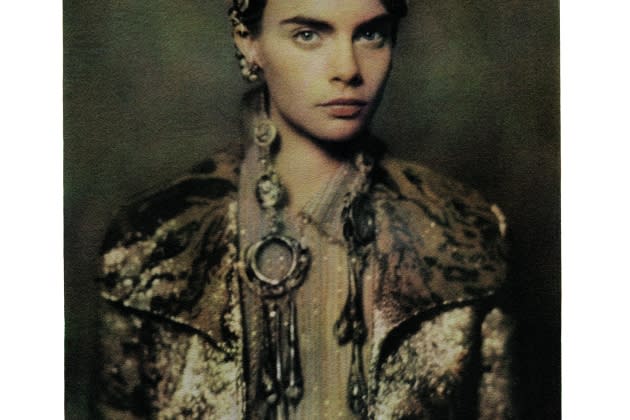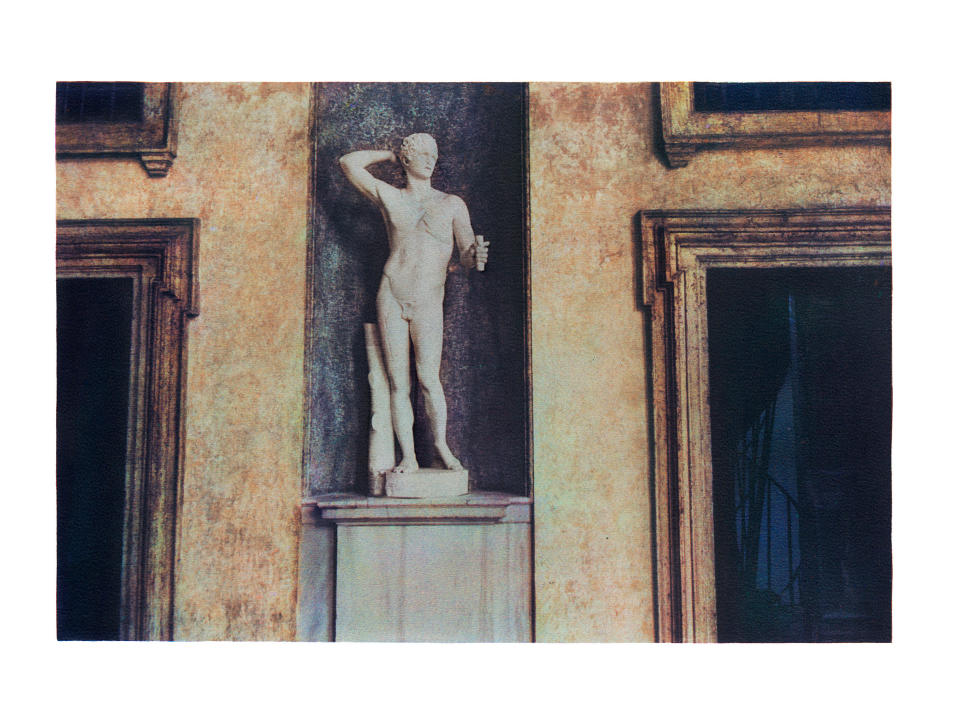Kim Jones Unveils ‘The Fendi Set,’ a Tribute Book

MILAN — Kim Jones is sending a love letter to the house of Fendi and reiterating his admiration for the Bloomsbury group of artists and writers, Virginia Woolf in particular.
His deep appreciation has resulted in a 230-page book, “The Fendi Set,” which will be published by Rizzoli this year to commemorate the centenary of Woolf’s birth.
More from WWD
Jones has been so fascinated by Bloomsbury that his first couture show for Fendi in January 2021, shortly after being appointed artistic director of women’s wear and couture, was inspired by Woolf, her literary masterpiece “Orlando,” and the British writer’s sister Vanessa Bell, a painter, interior designer and member of the Bloomsbury Set.
Jones grew up in Lewes in the South of England where members of the Bloomsbury Set, which also included the likes of Duncan Grant and Roger Fry, had lived in the neighboring villages of Rodmell and Firle.
“I must have been about 14 when they came onto my radar. As a teenager I would visit Lewes with my family, and we moved there when I was 16,” said Jones. “Lewes is quite bohemian, and the Bloomsbury Group and Virginia Woolf were often discussed within my group of friends.”
As a consequence, Jones has developed an impressive personal collection of signed and presentation copies of first edition books associated with the group, including Hogarth Press editions — the publishing house founded by Woolf and her husband Leonard; Omega design and furniture collective, initiated by Fry, and works of art by Grant and Bell, among others.
Documentary and portrait photographer Nikolai von Bismarck, who has worked with Jones before on “The Dior Sessions” volume, collaborated with the designer once again on “The Fendi Set” to create a multi-layered, multi-textured collage of images. Their landscape format and romantic tones create the impression of a Victorian album of photographs, each section treated with a variety of papers and printing techniques.
“The Fendi Set” highlights the art of books and letter writing that were central to the Bloomsbury Group’s development, and the connection with Italy and Fendi’s Roman roots is illustrated by the trips the group took to Rome and Tuscany.
The book juxtaposes facsimile copies of original letters and diary entries by members of the Bloomsbury Group with von Bismarck’s photographs, particularly the love letters between Woolf and Vita Sackville West.

Von Bismarck studied both the books in the library at Charleston, the home and studio of Bell and Grant, and in Jones’ personal archive, photographing the decoration of their covers, which provided many of the marbled and textured backgrounds of “The Fendi Set.”
The same “Caslon” font that Virginia Woolf and her husband used for Hogarth Press is used throughout the volume.
“Whether shooting landscapes, interiors or models, I wanted to maintain an ethereal sense of dreaminess, with figures that are occasionally ghost-like and who seem to drift on the page,” said von Bismarck. “Sometimes with muted colors to mirror the palette of Duncan Grant and Clive Bell. Sometimes images were dark and moody, textured, layered, soft blurred and sometimes not like photographs at all — images that were above all romantic and true to the characters of the Bloomsbury Group, dark, graceful and free.”
Fendi was founded in 1925, when the Bloomsbury artists first began to be renowned and when Woolf’s “Mrs. Dalloway” novel was published by the Hogarth Press.
“Fendi is of course a family and a dynasty. It is a family of creative collaborators, with Silvia Venturini Fendi and her daughter Delfina Delettrez Fendi working closely within the house. It is important when you work somewhere to understand the artistic heritage,” said Jones.
“The Fendi Set” introduces the “Omega Fendi” on the book’s inside cover — a reference to the experimental Omega Workshops design laboratory set up by members of the Bloomsbury Group in 1913 — joined with the signature FF logo.
Jones is fascinated by a series of catalogues that Bell and Grant published in the 1930s of works painted both in Sussex and in Rome, for which Virginia Woolf wrote the introduction notes, and by the diary entries the writer made of her travels in Italy and the letters she exchanged with her friends and lovers.
“I own Vanessa Bell exhibition catalogues which tell you exactly when she was in Rome with Duncan Grant and these catalogues, alongside the diaries and letters were key to bringing the narrative together for me,” said Jones. “Virginia Woolf wrote wonderful introductions describing where and when her sister had painted in Rome.”
The designer underscored the shared heritage of Bloomsbury and Fendi in England and Rome.

Photography ? 2022 Nikolai von Bismarck
“I wanted a ghostly atmosphere, a dreamlike quality,” continued Jones. “‘Orlando’ is about time traveling and I wanted the work to transcend time, to drift between the present, past and future. Nikolai’s photographic language and his exploration of both analogue and other experimental techniques and textures evokes these shifting narratives.”
Von Bismarck has divided the book into three sections: the first follows Bloomsbury through the pastoral locations of Sussex and Kent associated with the group, including, Knole, the ancestral home of Vita Sackville West and the inspiration for the fictional family seat of “Orlando” and Monk’s House, home to the Woolf couple until the writer’s suicide in 1941.
“Over 11 months I had the opportunity to go deep — to research, visit and photograph the houses and gardens the Bloomsbury Group lived in and decorated, many of which are still remarkably intact, to see the desks they worked at, even the beds they slept in, to walk through the Sussex and Kent countryside in their footsteps and follow them to Rome, and visit the studios they worked and lived in as well as the various sites they painted, sketched and described in their letters and books,” said von Bismarck.
The second section of the book is set in Paris where, during the filming of the couture presentation and over a period of four days, the collection was photographed by von Bismarck on each of the models who wore it, including Demi Moore, Kate and Lila Moss, Naomi Campbell, Cara Delevingne, Bella Hadid and Christy Turlington. The sets were especially designed and built on site.
The third section highlights the city of Rome, in the footsteps of the Bloomsbury artists who spent time there.
Von Bismarck lensed three generations of Fendi women — Anna, her daughter Silvia and granddaughter Delfina — styled by Lady Amanda Harlech and wearing Jones’ first fall ready-to-wear collection for the house in the historic setting of the Villa Medici in the heart of Rome.
“I explored many different photographic and printing techniques: color dye reversal, slide photography, numerous photographic films in a variety of sizes and formats as well as expired Polaroid film,” said von Bismarck. “It was important for me to use some of the technology of the period: cameras, but certain processes, some of which existed around the time the Bloomsbury Group was flourishing and will no longer exist in years to come.”
Other contributors to “The Fendi Set” include Woolf expert and Bloomsbury scholar Mark Hussey, who wrote the introduction in which he further develops the relationship between the group and Italy. Hussey was also instrumental in working with the archive of the Berg Library in New York, which houses the majority of Woolf‘s diaries and letters, many of which have been reproduced in facsimile for the book and in a transcribed form for the glossary.
Tilda Swinton, who played Orlando in the 1992 film of the same name, wrote the preface, and actress Gwendoline Christie was shot in England at Knole and Sissinghurst wearing Fendi couture.
Best of WWD
Sign up for WWD's Newsletter. For the latest news, follow us on Twitter, Facebook, and Instagram.